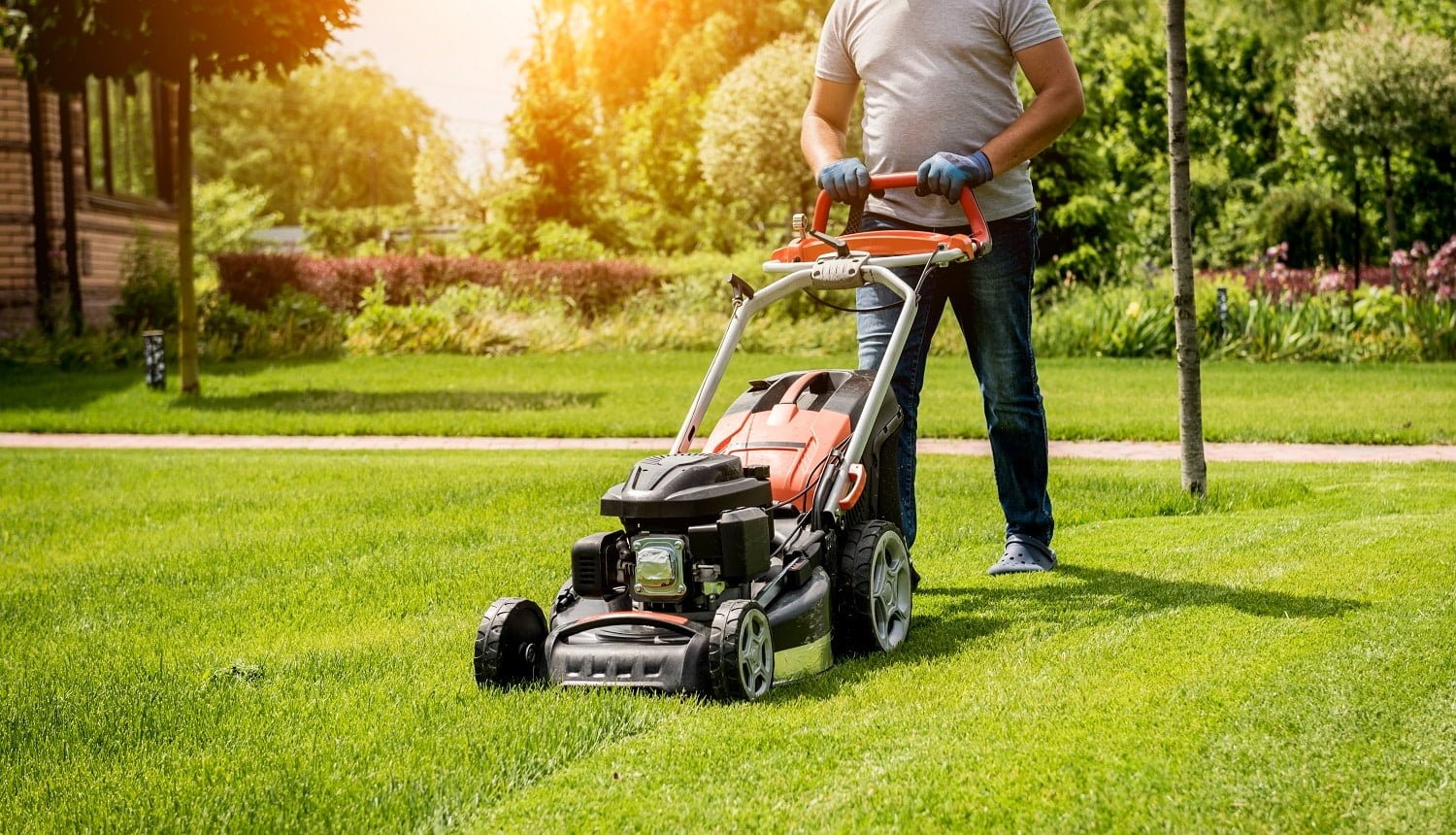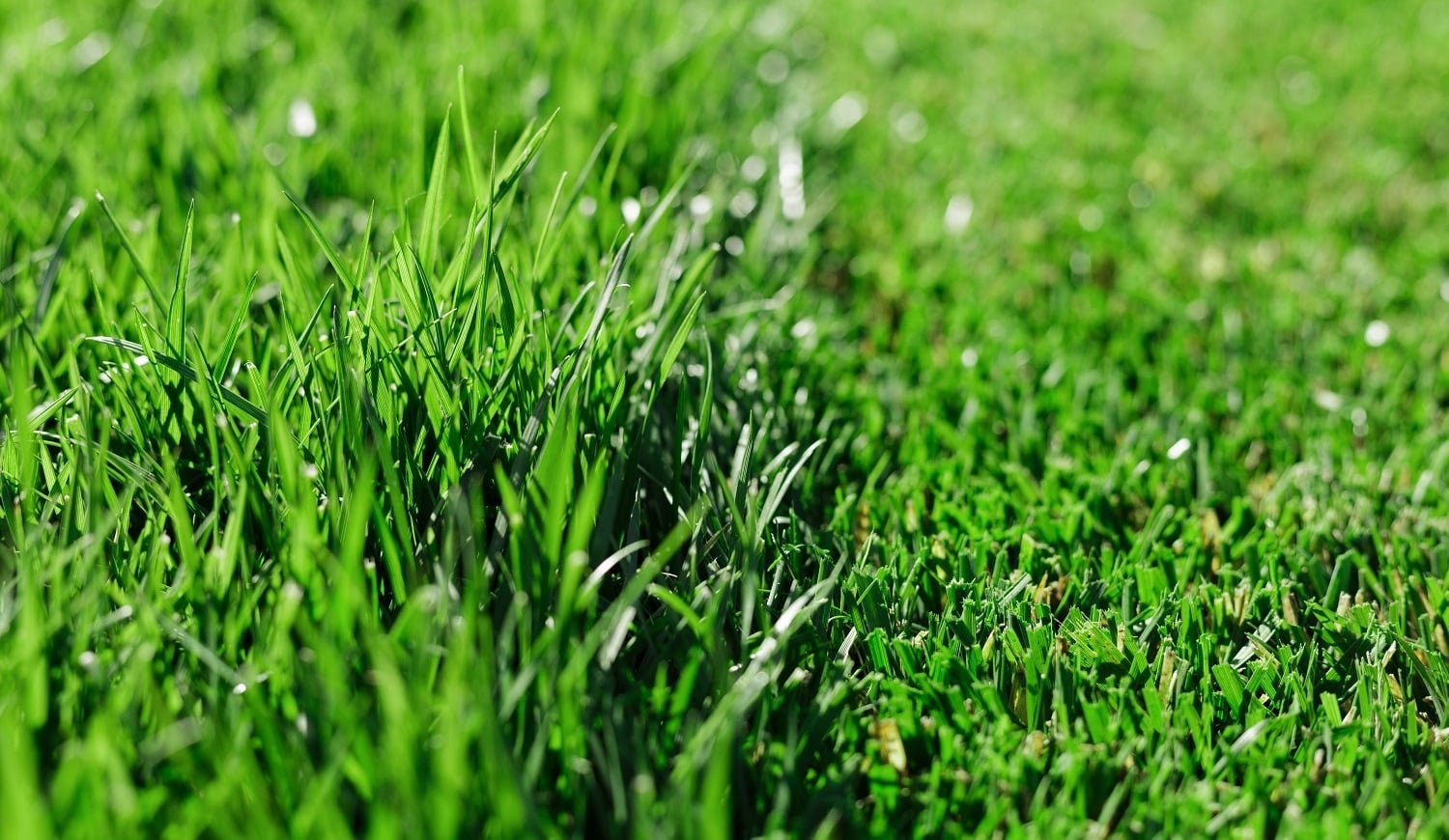Mowing the lawn seems like a straightforward task, right? But did you know that there is a right and a wrong time to do it?

Whether you consider yourself a lawn expert or not, growing grass isn’t entirely child’s play. If you have recently planted seeds or installed a new turf, you might be worried about the slow growth rate. But, if properly cared for, grass can begin to grow very quickly.
In fact, it can be tempting to bring out the lawn mower and start trimming immediately. However, this could do more damage than good.
It is essential to wait for some time before you begin trimming, as it can damage seedlings. So, if you’re wondering how long you should wait before mowing your new lawn, don’t fret! We have curated a detailed guide to help you understand this and more.
So, without further ado, let’s get straight to the deets!
How Long Should You Wait Before Mowing Grass?

Well, there is no universal correct answer to this. Depending on the kind of seed you use, it might take anywhere between 5 to 30 days before any grass starts growing. Of course, you should not bring out your lawn mower right away!
To encourage healthy grass growth, you need to water, feed, and provide adequate sunlight. However, allowing the grass to grow until a certain point is also beneficial to its health.
How Long Should You Wait Before Mowing Seeded Grass?
Let’s say that you decided to grow the grass on your lawn from scratch. Once you buy the right kind of seeds and plant them, it could be a long wait before you begin to see any growth. In fact, seeded grass can take the longest time to grow.
If planted during the active growing season, you should be able to see some growth within eight weeks. By this time, the grass blades should be around 3 to 3.5 inches tall. However, don’t get started with the mower just yet.
The first time you mow grass on the new lawn, make sure to tread carefully through the turf. Applying excess pressure or pulling on the blades violently can cause the seedlings to be forced out of the soil. This harms the grass as well as the soil, and it can be challenging to replant in the same area.
So, how do you mow the new lawn properly? Well, it helps to maneuver the lawn mower gently at first, without applying too much pressure or going too fast. Move the mower in one direction slowly, and then the opposite direction (to get smooth, even trimming).
It will also ensure that the roots of the grass remain protected and don’t suffer damage.

How Long Should You Wait Before Mowing Sod & Sprig Installations?
In contrast to seeded grass, sod takes a relatively shorter period to grow. Once the germination process begins, you can mow your lawn after about two weeks. That being said, heavy mowing can damage the grass, and we recommend that you wait for a few weeks.
Ideally, waiting for a month before mowing your new turf will ensure that the grass grows well, is healthy, and doesn’t go through unnecessary trauma.
When it comes to sprig installations, we recommend waiting for three to six weeks. Carefully observe the growth of grass - typically, sprig installations require more space to spread out and grow horizontally.
Even so, it is possible that the turf is still not wholly established. So, how can you know for sure?
Well, an easy way to check is to tug lightly at the corner edge of the installation. If the grass remains tightly bound to the soil, you can proceed with mowing. However, if you notice the blades coming off too easily or they seem loose in the soil, it is best to wait a few more weeks before mowing.
Why Do You Need To Wait Before Mowing?
You might be wondering why we recommend waiting for a few weeks before mowing the lawn. After all, no one likes a shabby looking garden, right?
We understand! However, if you mow too quickly, the grass does not get enough time to grow properly. Once the grass reaches about 2 inches in height, it automatically provides a shade or a sun and dirt barrier to the lower portion of the grass and soil.
Moreover, the taller grass blades protect the topsoil from losing excessive moisture. To keep the moisture locked into the topsoil and protect germinating seeds, it is imperative to allow grass to grow a few inches.
Another issue that can occur by over-mowing the lawn - drought stress. When grass is trimmed excessively, it can lead to shallow root systems. This, in turn, causes drought stress. With the top blades of the grass perpetually missing, the process of photosynthesis is compromised.
This leads to grass being in a perpetual state of distress and encourages pest infestations and pathogens. Ideally, you should allow your turf to grow (and stay) at least 2 inches in height.

The Proper Way To Mow Grass
Did you know there is a proper way to mow grass? Well, it turns out there is, and doing it may help you have a lush, healthy lawn.
Ideally, you should allow the grass to grow at least 3 inches tall, but not more than 4 inches. Before mowing, it will enable the grass blades to dry completely, as it will provide a healthy environment and ensure a neat, clean cut.
Stop irrigation for at least 48 hours - this is adequate time for the grass blades to dry. Furthermore, it enables you to trim the blades without causing them to tangle or get torn.
If you feel that the height of the grass is still too long, you can trim it in the opposite direction the next morning. It is best to allow the grass to rest for a day, as over-mowing can cause distress.
Ideally, you should remove only one-third of the length at a time. This leaves enough room for the grass blades to photosynthesize.
Pro Tip - Leave the grass clippings behind (instead of raking them up and disposing of them). These clippings will leave behind nutrients that are important for the soil and roots. Moreover, they help the soil retain moisture without adding excessive water to it.
In case you notice seeding weeds, it is advisable to bag up the clippings and dispose of them. You should also dispose of the trimmings if they are too long, as it will cause a mess rather than provide adequate nutrition).
The Right Way To Water Grass For Best Growth
If there is a proper way to mow a lawn, there must be an appropriate way to water it, too, right? Well, there is! The correct watering technique is one of the most critical factors that ensure proper, healthy grass growth.
When you plant seeds or seedlings, it is important to keep them moist, but not entirely wet. This moisture is what allows the seeds to develop and germinate into healthy grass blades. The topsoil (or the top 1-inch) of soil should be kept moist at all times.
We recommend watering your new lawn twice a day until you mow it. Seed hulls require an adequate amount of water to germinate into healthy plants. This new growth is unable to survive under certain conditions, like dry roots. Ensure that you keep a strict watering schedule to prevent roots from drying.
Once the seedlings have grown into taller grass and their roots have developed, you can reduce the frequency of watering. That being said, keeping a consistent watering schedule will ensure that your turf is perpetually lush, green, and healthy.

Final Words
Even those who consider themselves gardening lovers often forget that there is a right and wrong time to mow grass.
We hope this guide helped you understand more about healthy grass growth and when you should trim it. Be sure to familiarize yourself with the type of seeds you plant and the right conditions required to thrive.
With that, we have come to the end of our guide. Like any other plant, your turf requires a little attention, care, and maintenance to thrive and stay lush.
Stay safe and happy mowing!
Related Articles
The 5 Best Lawn Mowers for St Augustine Grass Right Now
Where to Find Good St. Augustine Grass Seed & How to Grow It
7 Best Shoes for Cutting Grass Comfortably | Buyer’s Guide
11 Best Mosquito Fogger Insecticide
9 Best Fertilizers for Petunias Right Now
9 Best Fertilizers for Hydrangeas
11 Best Fertilizers for Lilacs
How to Install Landscape Fabric for Weed Control
